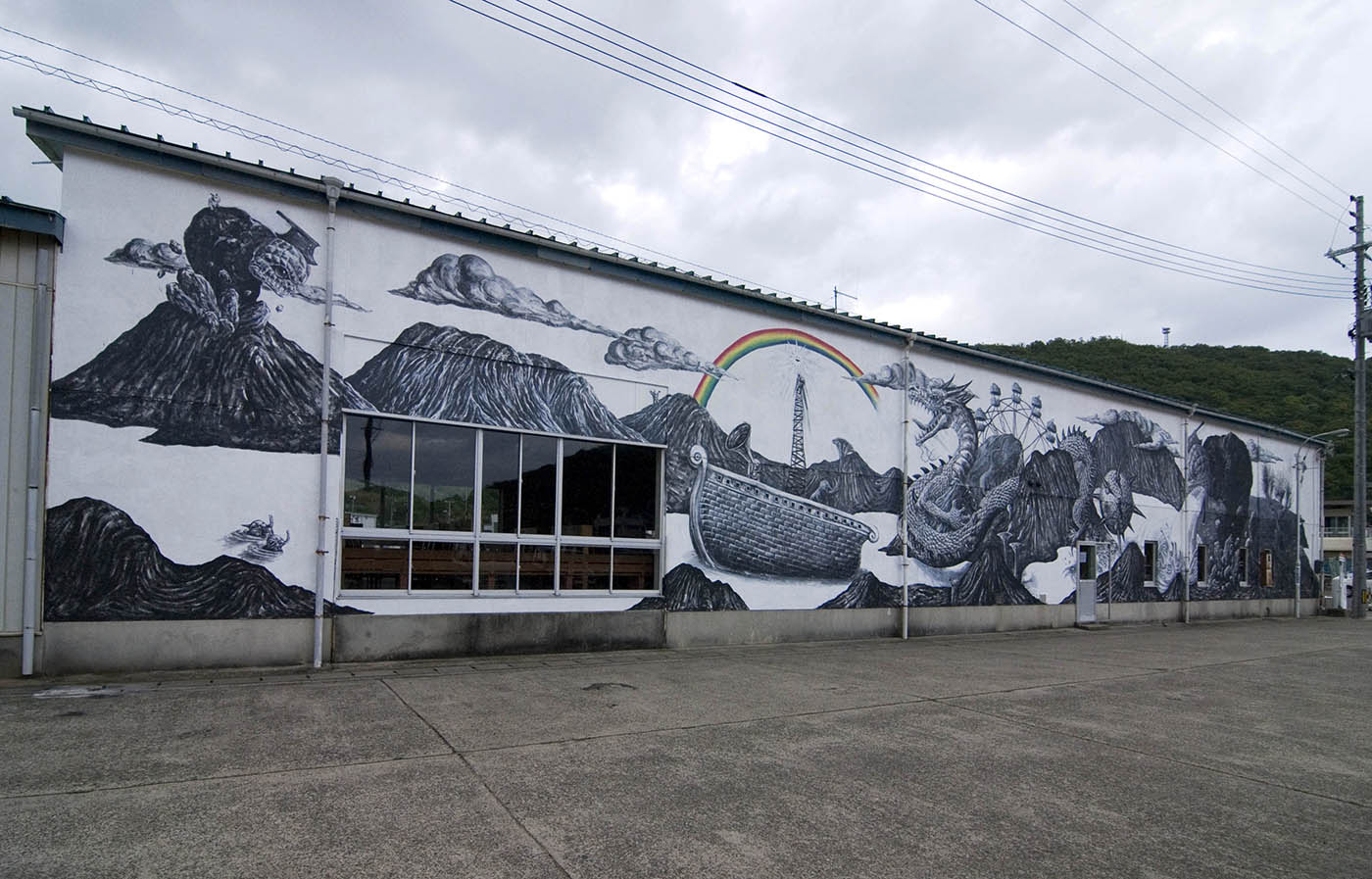Shodoshima Project [2013]
Island Where Legends Emerge
Setouchi Triennale 2013 is an international art exhibition held in islands of Seto Inland Sea. This exhibition is also an attempt of art tourism, in which participating artists find attractive points of the local area thorough making their art works and tourists also find the charms of the area through visiting the exhibition. Setouchi Triennale 2013 is the second one following 2010. Over 150 artists participated and the period of Triennale was expanded to three seasons, spring, summer and autumn. Visitors enjoyed the art works and local area that changes for each season.
Kenji Yanobe, artists and students from Kyoto University of the Arts gathered around Hishio no Sato area and Sakate Port area of Shodoshima Island, the largest island of the sites of exhibition. They planned a project to turn the island into an island of art and make a theme “Relational Tourism” to make continuous relationship with the local community.
Yanobe, one of the central artists of Setouchi Triennale 2013, tried to make Shodoshima Island, famous for its olive trees, as a stage of stories such as Noah’s Ark and Yanobe’s own stories. He installed two bodies of Jumbo Torayan (2013) on decks of two Shodoshima Jumbo Ferries, one work foreach ferry. The ferry is plying between Kobe Port and Sakate Port of Shodoshima Island. One of Jumbo Torayan holds a steering wheel and the other holds a twig of olive in its hand.
In the story of Noah’s Ark, a dove came back to the ark with a leaf of olive to tell that the surface of land reappeared after the great flood. Yanobe staged the ferries as Noah’s Ark and Jumbo Torayan steered the ferry to Shodoshima Island as “Island of Hope”. This setting was also reflected a plot of Yanobe’s picture book Torayan’s Great Adventure.
ANGER from the Bottom (2013), a collaborative work with Beat Takeshi (Takeshi Kitano) got the biggest attention among the works in Shodoshima Island. It was installed at the former site of old well, which is located at the foot of Dounzan Mountain, looking over Seto Inland Sea. THE STAR ANGER (2012), a work of huge mirror ball with a dragon, was installed on the former site of lighthouse located at the wharf of Sakate Port and casted light like a lighthouse. These works, installed at historical sites of Shodoshima Island, served to bring back the memories of the local people and also gained a new meaning. Because the works resonated with historic and religious sites, such as Kobono-Taki Gokokuji temple which enshrines Hachidairyuo (eight kings of dragon) with a fountain of wonder-working water, Dounzan Mountain which enshrine Gesshi-Kannon (image of Kannon (Goddess of Mercy), on the surface of rock wall which appears only in five minutes around the short period of summer solstice, Hoshigajo Mountain (the highest mountain in Seto Inland Sea Area), and Kankakei designated as a national park.
During the period of exhibition, Beat Takeshi visited the sites and had a ritual with local people to calm down the anger of God in old well which had turned to be a monster. Yanobe wanted to make the art project in Shodoshima Island not as a temporary one, but as more enduring one, remembered and handed down for the future. On the wall of waiting room at Sakate Port, which is 35m long, Miki Okamura drew a mural like a scroll painting based on Yanobe’s idea, which was entitled Shodoshima Engi Emaki (Legend of Shodoshima, 2013). In the mural, she drew the stories of art projects in Shodoshima Island as magnificent drama leading into the future. The stories depicted in the mural are reminiscent of stories Noah’s Ark, folklores of Shodoshima Island and tale of the Kuni-Kuni-Umi (The Birth of Land) in Kojiki (Records of Ancient Matters).
